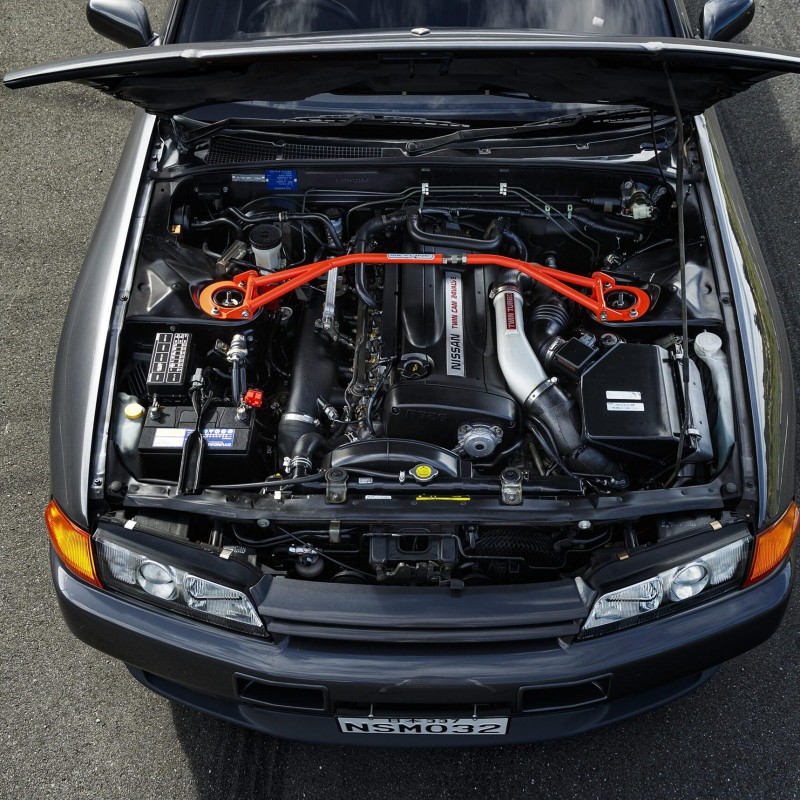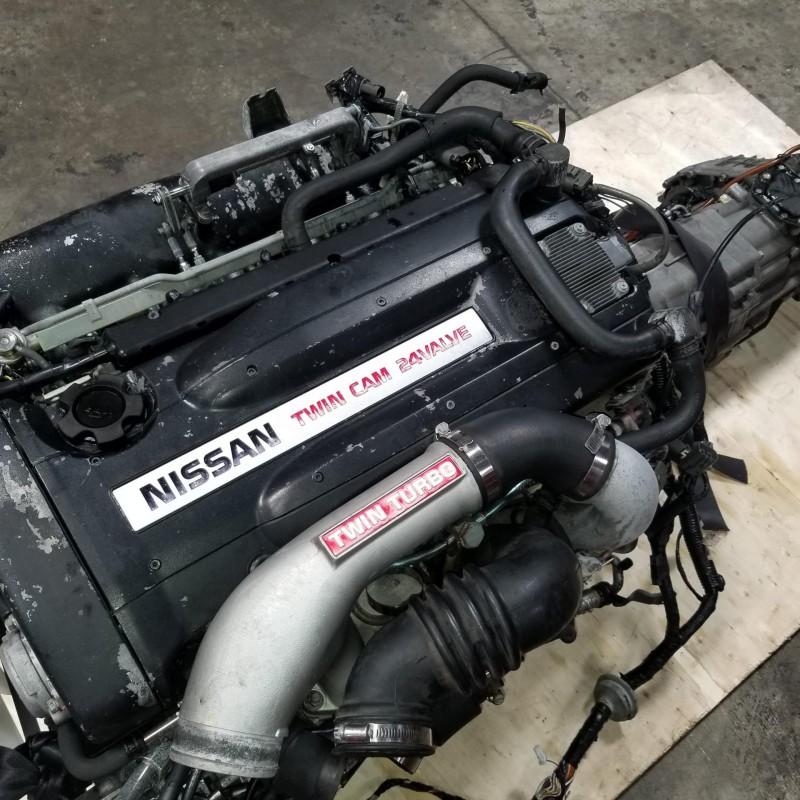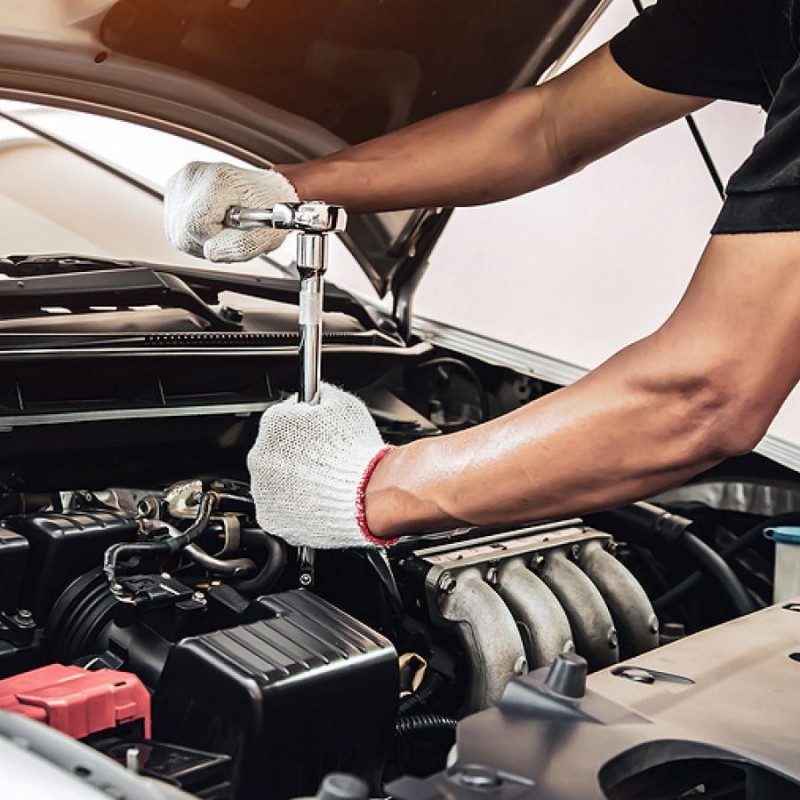The 350 V8 engine, a powerhouse that has carved its niche in automotive history, is renowned for its reliability, versatility, and remarkable performance. Initially introduced in 1967 by General Motors, this engine quickly became a favorite among car enthusiasts and manufacturers alike. As part of the Chevrolet Small Block V8 family, the 350 cubic inch (5.7-liter) engine has powered a wide variety of vehicles, including classic muscle cars, trucks, and modern-day performance vehicles. Understanding the intricacies of the 350 V8 engine is crucial for anyone looking to optimize their vehicle’s performance, whether for daily driving, towing, or racing. In this comprehensive guide, we will delve into the history, specifications, common applications, performance modifications, and maintenance tips related to the 350 V8 engine. This extensive exploration will provide valuable insights to both enthusiasts and casual drivers, empowering them with knowledge about one of the most iconic engines in automotive history.

History of the 350 V8 Engine
The lineage of the 350 V8 engine can be traced back to its predecessors, with its development driven by the demand for more power and efficiency in vehicles during the late 1960s.
Introduction of the Small Block V8 Family
The Chevrolet Small Block V8 family first emerged in 1955, revolutionizing the automotive industry. With its lightweight design, compact size, and efficient performance, this engine quickly gained popularity among car manufacturers and enthusiasts. The original engine had a displacement of 265 cubic inches, but it was not long before Chevrolet began increasing the size and power of its smaller V8 engines.
Emergence of the 350 V8
By the late 1960s, the automotive landscape was shifting towards increased performance and power. In 1967, Chevrolet introduced the 350 V8 engine as part of its new generation of small block engines. The engine’s design featured a 4.00-inch bore and a 3.48-inch stroke, resulting in a displacement of 350 cubic inches. Initially, the engine produced around 245 horsepower, and various configurations were soon made available.
Popularity in American Muscle Cars
The 350 V8 engine quickly became a staple in American muscle cars. Notable models like the Chevrolet Camaro, Corvette, and Chevelle utilized this powerful engine option. As the muscle car era blossomed, automotive manufacturers recognized consumer interests in speed and performance, which solidified the 350 V8’s status as an iconic powerhouse.
Evolution and Modernization
Over the years, the design of the 350 V8 has evolved. Various iterations were released throughout the 1970s and 1980s, adapted for changing emissions standards and consumer demands. Although power outputs decreased during the stringent emissions regulations of the 1970s, the 350 V8 engine remained a popular choice for both everyday drivers and performance enthusiasts.
Legacy and Continued Relevance
Today, the 350 V8 engine still holds a notable place in automotive history. Although newer technologies such as turbocharging and hybrid systems have gained prominence, the 350 V8’s simplicity, reliability, and broad aftermarket support make it a preferred choice among gearheads. Whether used in builds of classic cars or modern hot rods, the 350 V8 engine continues to leave an indelible mark on automotive culture.
Specifications of the 350 V8 Engine
Understanding the specifications is key when working with or evaluating a 350 V8 engine. These specifications provide insight into the engine’s design, capabilities, and potential for modification.
Basic Specifications
Here are some essential specifications for the standard 350 V8 engine:
- Engine Type: V8
- Displacement: 350 cubic inches (5.7 liters)
- Bore: 4.00 inches (101.6 mm)
- Stroke: 3.48 inches (88.4 mm)
- Compression Ratio: Ranges typically from 8.5:1 to 10:1, depending on the specific version of the engine
- Horsepower: Variable; common output ranges from 145 to over 400 horsepower depending on configuration
- Torque: Ranges commonly between 250 lb-ft to over 400 lb-ft, depending on versions and tuning
Engine Design Features
The 350 V8 engine includes key design features that contribute to its overarching performance characteristics:
- Block Construction: Made of cast iron for durability, with some versions featuring lightweight aluminum intakes for better performance.
- Cylinder Heads: Typically equipped with either cast iron or aluminum heads, contributing to airflow and combustion efficiency.
- Fuel System: Most 350 V8 engines utilize a carburetor; however, some models transition to electronic fuel injection, enhancing efficiency and emissions control.
Performance Variants
Over the years, the 350 V8 engine has seen various performance variants and configurations:
- Standard Engine: Designed primarily for everyday use, yielding moderate horsepower and torque for typical driving needs.
- High-Performance Variants: Performance-oriented editions, such as those used in muscle cars or racing applications, equipped with performance camshafts, intake manifold upgrades, and modifications to compression ratios.
Understanding the specifications of the 350 V8 engine arms enthusiasts with the knowledge necessary to choose the strong engine for their needs, whether in terms of restoration or performance modifications.
Common Applications of the 350 V8 Engine
The versatility of the 350 V8 engine allows it to be used across a wide range of vehicles, each taking advantage of its powerful performance characteristics. Here are some of the most common applications:

Muscle Cars
The 350 V8 engine has been a go-to choice for numerous classic and modern muscle cars.
- Chevrolet Camaro: With various performance packages available, the Camaro frequently utilized the 350 as an ideal balance between power and drivability.
- Chevrolet Corvette: Known for its sports performance, many Corvette models have featured the 350 engine, combining speed with an exceptional driving experience.
- Chevrolet Chevelle: Known as a legendary muscle car of the late 1960s and early 1970s, Chevelles equipped with the 350 engine could reach impressive performance levels.
Trucks and SUVs
The 350 V8 engine also found a niche within the pickup truck and SUV market, offering the torque needed for towing and hauling.
- Chevrolet Silverado: The 350 engine has been a trusted option for various Silverado pickup configurations, providing the power necessary for heavy-duty tasks.
- Chevrolet Suburban: Along with other full-size SUVs, the Suburban benefitted from the engine’s ample power and reliability during family trips or off-road use.
Performance and Racing Vehicles
Enthusiasts have sought the 350 V8 engine for performance builds and racing applications due to its reliability and ease of modification.
- Drag Racing: The 350’s robust design makes it a staple in drag racing circuits, where heavy modifications can yield impressive horsepower.
- Hot Rods: Custom builds of classic cars often use the 350 engine as a base to achieve a desired blend of performance and classic style.
Boats and Marine Applications
The marine industry has also leveraged the power of the 350 V8 engine in various vessels.
- Inboard Marine Engines: Many boats utilize variants of the 350 engine for their reliability and high torque at low RPMs, ideal for cruising.
Performance Modifications for the 350 V8 Engine
Many car enthusiasts turn to performance modifications to unlock the full potential of the 350 V8 engine. By implementing specific upgrades, you can enhance horsepower, torque, and overall performance. Here are some common modifications:
Cold Air Intake System
Installing a cold air intake system can improve airflow to the engine, providing several benefits:
- Increased Horsepower: Enhances throttle response and power output by allowing more air into the combustion chamber.
- Improved Engine Sound: Many enthusiasts appreciate the aggressive sound provided by a well-designed cold air intake.
Performance Exhaust System
Upgrading the exhaust system is a popular modification for improving engine performance.
- Reduced Back Pressure: A performance exhaust helps eliminate restrictive factory components, enhancing exhaust flow.
- Enhanced Sound: Offers a more aggressive exhaust note that many car enthusiasts find appealing.
High-Performance Camshaft
Replacing the stock camshaft with a performance-oriented option can yield significant gains.
- Greater Performance: A higher lift and duration camshaft allows the engine to breathe better, increasing horsepower, especially at higher RPMs.
- RPM Range: Tailor the camshaft choice to fit your driving needs; some are better suited for street use while others excel in racing situations.
Upgraded Fuel System
To support performance modifications, the fueling system may need to be upgraded.
- Fuel Injectors: Installing high-flow injectors ensures that the engine receives the necessary fuel for improved performance.
- Fuel Pump: A high-capacity fuel pump can maintain the right pressure and prevent fuel starvation during high-demand situations.
Engine Tuning
After making modifications, engine tuning is crucial for maximizing performance.
- ECU Re-flash: Reprogramming the engine control unit can optimize air-fuel ratios and ignition timing tailored to the specific upgrades installed.
- Dyno Testing: Utilize a dynamometer to measure performance gains and fine-tune adjustments for optimal results.
Improved Cooling System
Enhancing the cooling system can benefit performance, particularly for modified engines.
- High-Performance Radiator: A larger radiator helps maintain optimal operating temperatures during high-demand scenarios.
- Upgraded Thermostat: Consider installing a lower temperature thermostat to improve cooling efficiency.
By incorporating these performance modifications, you can unlock your 350 V8 engine’s true potential. Each enhancement contributes to a more powerful, responsive, and enjoyable driving experience.
Maintenance Tips for the 350 V8 Engine
To ensure optimal performance and longevity, regular maintenance of the 350 V8 engine is essential. Here are some key maintenance tips to keep in mind:
Regular Oil Changes
Establishing a routine for oil changes is critical for engine health.
- Quality Oil: Use high-quality motor oil that meets the engine’s specifications to ensure proper lubrication.
- Change Intervals: Follow the recommended oil change intervals. Frequent short trips may necessitate shorter intervals due to oil contamination.
Inspecting Belts and Hoses
Wear and tear on belts and hoses can lead to engine problems.
- Visual Inspections: Regularly inspect belts for signs of fraying, cracking, or glazing. Hoses should be checked for leaks or bulges.
- Timely Replacements: Replace any worn components promptly to prevent breakdowns or overheating.
Cooling System Maintenance
Maintaining the cooling system is essential for preventing engine overheating.
- Coolant Flush: Periodically flush the cooling system to remove contaminants and ensure the efficiency of the radiator and hoses.
- Thermostat Functionality: Regularly check the thermostat for proper operation, as a failing thermostat can lead to it overheating.
Spark Plug Maintenance
Spark plugs are vital for efficient combustion; therefore, regular checks and replacements are essential.
- Inspection: Inspect spark plugs for signs of wear, build-up, or damage. Replace them according to the manufacturer’s maintenance schedule or sooner if performance declines.
- Correct Gap: Ensure that spark plugs are properly gapped according to specifications to optimize ignition and performance.
Air Filter Changes
A clean air filter is critical for maintaining optimal airflow to the engine.
- Regular Checks: Regularly inspect the air filter for dirt and debris buildup.
- Replacement Schedule: Follow guidelines for filter replacement intervals, especially if you drive in dusty or dirty conditions.
Fuel System Maintenance
Maintaining the fuel system ensures uninterrupted performance.
- Fuel Filter Replacement: Replace the fuel filter according to your owner’s manual to minimize the risk of clogs or fuel starvation.
- Fuel Additives: Occasionally using fuel system cleaners can help prevent deposits and maintain fuel injector efficiency.
By adhering to these maintenance practices, you can significantly enhance the lifespan of your 350 V8 engine and ensure optimal performance for years to come.

Conclusion
The 350 V8 engine stands as a testament to automotive engineering, embodying power, versatility, and a rich history. Understanding how to identify engine wear is vital for any vehicle owner who seeks to maintain the longevity and efficiency of this iconic powerplant. By recognizing the signs and symptoms of wear, employing effective diagnostic methods, and implementing a solid maintenance routine, you can ensure the engine delivers long-lasting performance.
Whether you are looking to upgrade the performance of your engine or take steps to maintain it, the knowledge covered in this guide serves as a foundation for success. From cold air intakes and performance exhaust systems to regular oil changes and cooling system checks, every step towards proper maintenance contributes to enhancing your driving experience.
By investing time and effort into understanding your 350 V8 engine, you embrace the rich history and performance characteristics that have made it a beloved choice among automotive enthusiasts. The 350 V8 engine’s legacy of reliability and power will continue to resonate with generations of drivers and car lovers.
Tags: automotive performance, classic cars, engine maintenance